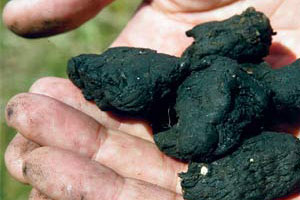
Photo courtesy of Wikipedia Commons
Since I raised the possibility two weeks ago that sewage sludge fertilizer could have contaminated the Obamas’ White House vegetable garden with lead, there has been a flurry of press on the subject. Various food and gardening blogs and dueling Huffington Posters weighed in, followed by the AP, Reuters, and the New York Times after a White House spokeswoman publicly addressed the lead issue on Thursday. Much of the coverage has sought to quell misperceptions that produce from the White House garden is unsafe to eat. Indeed, as I pointed out in my original post, the levels of lead in the garden are still well below those that the EPA says can cause health impacts. But in obsessing over whether the Obamas are poisoning themselves and their guests–and there’s no proof that they are–most of the media missed the more interesting question: Is it really a good idea to grow vegetables on land that has been fertilized with sewage sludge?
The EPA thinks so, and has promoted the practice for decades as an alternative to landfilling sludge or dumping it in the ocean. In what was probably the single most effective component of a vast marketing campaign for sludge fertilizer, the National Park Service tilled it into the White House’s South Lawn through much of the 1990s. Interest in the President’s preferred brand of sludge spiked to the point that its makers had a hard time meeting the demand. Today, more than half the poop flushed in America ends up as fertilizer.
The safety of sludge might not be such a concern when it’s spread your lawn and covered in a layer of grass, but chew on this: Food companies such as H.J. Heinz and Del Monte won’t accept produce grown on sludge-treated land. The Netherlands and Switzerland effectively ban the use of sludge on farmland, and the practice is expressly prohibited by the USDA’s organics standards. If sludge has been spread on the South Lawn anytime since about 2006, the Obamas’ pesticide-free garden could not be certified as organic.
The human poop in sludge isn’t necessarily the problem. Sludge can contain traces of anything that gets poured down the drain, from Prozac flushed down toilets to lead hosed off factory floors. The EPA sets concentration limits for several heavy metals found in sludge, including lead, but the limits are higher than what is deemed safe in some European countries. For example, the EPA permits sludge to contain up to 300 parts per million of lead, but the Netherlands raises concerns about soil with more than 40 ppm of lead.
In the case of the Obama garden, I would be less concerned about lead–which turned up at about 93 ppm, a fairly normal level for urban areas–than with a host of other potential contaminants. Substances like PBDEs, which are highly bioaccumulative and being phased out, and PFOA, a probable human carcinogen, have turned up at high levels in sludge yet are not regulated by the EPA. When I investigated the EPA’s sludge policies recently, I turned up this example:
In 1979, a Georgia dairyman named Andy McElmurray started applying locally produced sludge fertilizer to his fields. Over the next several years, nearly half his 700 cows died from severe diarrhea. The EPA didn’t test his soil, but McElmurray hired his own experts, who concluded that his sludge had contained high levels of thallium. A toxic metal that is the active ingredient in rat poison, thallium rarely turns up in sewage, but it was used as a catalyst by a nearby NutraSweet factory. When McElmurray’s experts sampled a local milk brand, they detected thallium at levels more than 11 times above the legal limit for drinking water.
McElmurray sued the federal government for disaster relief, claiming sludge had destroyed his farm. He finally won the case last year. “I believe that if the farmer knew the truth, he would never put sludge on his farmland,” he says. “It’s all a smoke-and-mirrors game that the EPA has played.” His view was echoed by the federal judge who ruled in his favor, finding that “senior EPA officials took extraordinary steps to quash scientific dissent and any questioning of the EPA’s biosolids program.”
And lest you think the EPA has cleaned up its act, check out this extremely recent scandal:
In May 2007, the EPA learned that sludge had contaminated as many as 5,000 acres of grazing land [in Lawrence County, Alabama] with perfluorooctanoic acid (PFOA), a probable carcinogen used in Teflon. The chemical was traced back to a local manufacturer that had dumped contaminated wastewater straight into the sewer. The case prompted the EPA to issue its first-ever advisory on PFOA in drinking water, but it did not ban the dumping of the chemical into sewers or require sludge to be tested for it. Even though the exceedingly high PFOA concentrations in the Lawrence County fields could pose a health threat to animals or humans, as of press time, the Department of Agriculture hadn’t tested local cattle for the chemical.
For context, it’s important to keep in mind that sludge is widely used in US agriculture and hasn’t been shown to make people sick (though there are many anecdotal cases). For a full exploration of the debate over sludge, I highly suggest you read our feature story in the May/June issue, “Sludge Happens.”
UPDATE: Response to the New York Times.
















